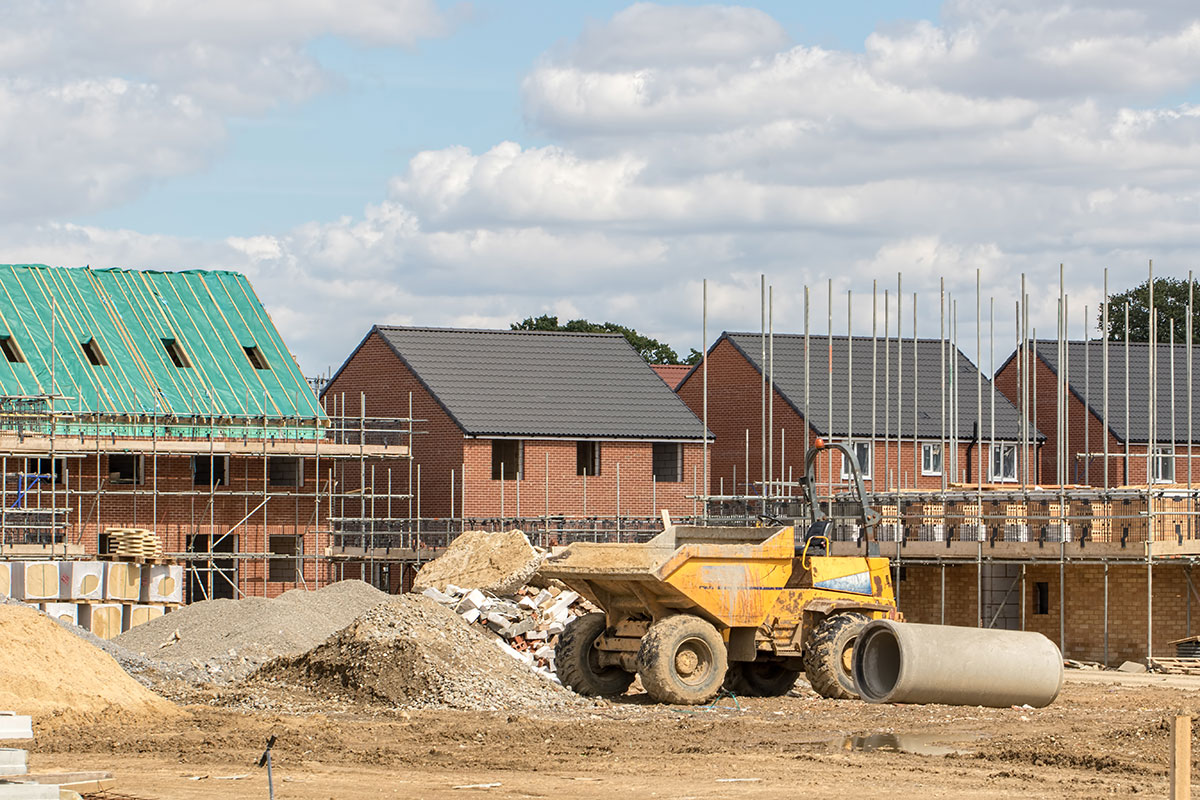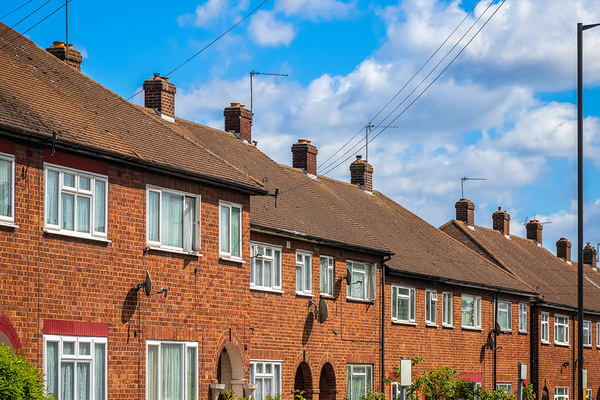You are viewing 1 of your 1 free articles

Jules Birch is an award-winning blogger who writes exclusive articles for Inside Housing
Conservative housing policy remains hamstrung by the conflict between short and long-term electoral considerations
The forever war between Conservatives who believe the housing crisis should be fixed by removing state intervention through the planning system and those who believe in using the planning system as a tool to conserve the status quo shows no sign of abating, writes Jules Birch
There is no chance of the government achieving its target of 300,000 new homes by the mid-2020s so why has the drama ramped up within the Conservative Party?
The answer is, of course, politics but it is coming from two different directions and there is a long history that lies behind it.
The inclusion of the target in the 2019 manifesto was all about having something to say to younger voters excluded from homeownership.
Note that the commitment is actually to a more weasly “progress towards” 300,000, alongside a promise of “at least a million homes” in this parliament, although both are important in focusing minds within government.
The latter target – effectively 200,000 a year – should be comfortably achieved, not least because it already happened in the last parliament.
Figures published last month showed that 232,820 net additional homes were delivered in 2021-22, a 10% increase on COVID-affected 2020-21 and not far off the pre-pandemic peak.
House builder after house builder has reported falling sales recently, so the total should fall this year regardless of anything MPs decide about planning.
Which is where the other direction comes in: the politics of appealing to well-housed, mostly older voters in affluent Conservative constituencies in the South East from MPs who fear a multiple repeat of the Tory defeat in the Chesham and Amersham by-election at the next general election.
An amendment moved by Theresa Villiers and signed by more than 60 Tory backbenchers would make any targets advisory rather than mandatory and scrap the requirement for local councils to demonstrate a five-year land supply.
This was enough to persuade the government to postpone a Report Stage debate on the Levelling Up and Regeneration Bill that was due to be held on Monday last week.
With Sir Keir Starmer offering Labour support, the government could easily defeat the rebels if it wished, but it sought a compromise behind the scenes instead and has now hoisted the white flag on the first of those rebel demands.
This is the story in the short term, but is connected to a much longer drama in which two sides of the Conservative Party seem locked in an eternal struggle that cycles between open conflict and back-stage compromise.
For Tories who believe in free markets, housebuilding is a classic case of a market held back by too much state intervention via a ‘socialist’ planning system.
But other Conservatives believe in, well, conserving things as they are and see the planning system and the green belt as vital mechanisms for achieving that.
In practice, of course, the dividing line is more blurred than that and plenty more needs to change to make homes more affordable. However, it goes some way to explaining why the party’s policy on housebuilding is so contradictory.
The recent conflict dates back to the late 1980s, when the Thatcherite environment secretary Nicholas Ridley coined the term NIMBY, but was forced to admit defeat in the “thankless task” of reforming the planning system.
It broke out again in the early 2010s under the Conservative-led coalition after it abolished what it saw as “Soviet-style” regional housebuilding targets introduced under Labour.
After a long battle between more pro-housing elements within the Conservative Party and opponents of more development, a compromise was developed featuring sticks and carrots.
Regional targets were scrapped but the National Planning Policy Framework introduced a “presumption in favour of sustainable development” in areas where there is no up-to-date local plan.
However, less than half of local authorities currently have a local plan that is up to date. That avoids local controversy but leaves them vulnerable to speculative planning applications from developers who can win on appeal.
Battle was rejoined again in 2020 over radical planning reforms proposed by housing secretary Robert Jenrick and a so-called “mutant algorithm” in the standard method for calculating housing need that seemed to increase the number of new homes required in Tory seats.
Both were dropped when Mr Jenrick was replaced by Michael Gove and compromise seemed the order of the day.
Speaking at the Conservative conference in October, Mr Jenrick defended targets as the way to get homes built, talked of “an anti-supply approach” in the past 12 months and criticised rebel rhetoric about “building homes in the right places” as code for nowhere near them.
But victory over that was not enough for the Tory rebels. Emboldened by promises about scrapping targets made by Conservative leadership candidates, they have co-opted much of the case made against big house builders and use dubious rhetoric about “brownfield first” and “use it or lose it” to make their case.
Many of the rebels are MPs for constituencies surrounded by green belt and other protected areas with few options available to build out from existing settlements, but they are also complaining about plans to build up by densifying existing town centres.
Iain Duncan Smith complains about “larger and larger tower blocks” planned in Chingford and Woodford Green and about the impacts on infrastructure and car parking.
Ms Villiers says much the same in Chipping Barnet and has campaigned against plans by Transport for London to build 351 new homes, 40% of them affordable, on the car park at Cockfosters tube station – even though it would be hard to imagine a site that better exemplifies the ‘brownfield first’ approach that the rebels say they want.
That’s prompted a backlash from pro-housing Tories. Two former housing secretaries and a housing minister warned last month that failing to build more homes will cost the party the next election. And the editor of the influential Conservative Home website asked why on earth young people who cannot afford a home would vote for the party.
According to The Times last week, Mr Gove is offering concessions including requiring change of use permission to convert a new home into a short-term let in tourist hotspots, ‘use it or lose it’ powers where developers do not start work within a year of getting planning permission, incentives for brownfield development and a right of appeal for residents against unpopular development.
Other ‘far-reaching’ concessions could follow, but the housing secretary is said to be resisting the rebels’ demand to ban all greenfield development except in ‘exceptional circumstances – something that currently applies to green belt development and would effectively mean ‘brownfield only’ rather than ‘brownfield first’.
Details of a compromise “to put local communities at the heart of the planning system” emerged late on Wednesday. The central element is that “housing targets remain an important part of the planning system and the government will consult on how these can better take account of local density”.
In its press release announcing the deal, the government adopted the very rhetoric about “the right homes in the right places with the right infrastructure” that Mr Jenrick condemned as code for ‘build them somewhere else’.
Ms Villiers told Daily Telegraph that the deal would allow councils to reduce their target where meeting it “would significantly change the character of an area, for example from suburban to high-rise urban”.
It seems a safe bet that this argument to block new homes will now be used by every Tory MP and council in the country.
There will also be a competition review of the housebuilding industry and measures to tackle slow build out, a strengthening of green belt protections and a review of how brownfield sites are used.
Another consultation on whether planning permission should be required for new short-term lets in holiday hotspots is good news, but it could also worsen the problem as anyone considering it will now race to do it before it’s too late.
Other options, such as radical reform of the land market and new towns are off the agenda.
The outcome will almost certainly be another messy compromise over the Levelling Up Bill that will deliver more homes than the rebels want but not enough to make any difference to affordability or access to homeownership.
The depressing prognosis is that the Conservatives will remain hamstrung by the conflict between short-term and long-term electoral considerations and our housing problems will continue to get worse.
Jules Birch, columnist, Inside Housing
Sign up for our Week in Housing newsletter
Already have an account? Click here to manage your newsletters












